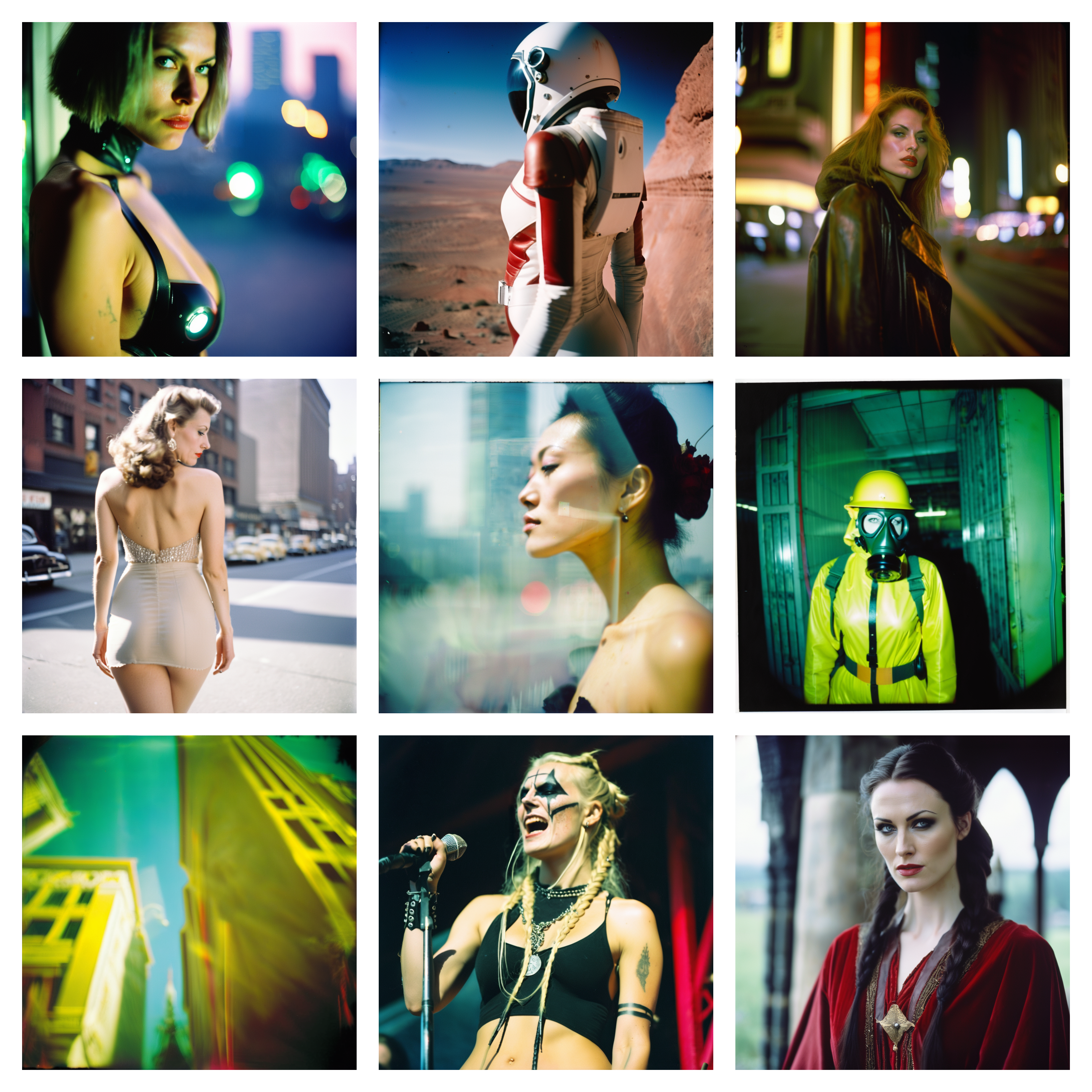
Similar to LomoStyle for SD1.5; LomoXL is trained on a dataset consisting of images taken with analog tech. This is not only a stylistic choice, but insures more authentic photorealistic generations.
Features
High-resolution images: Trained on 1024x1024 images (default for XL) manually captioned and cropped for optimal outputs.
Photorealism: While still lacking (compared to SD1.5), everything that went into this model was intended to create more authentic photorealistic images. This includes data selection, processing, captioning, and training parameters.
Full parameter fine-tune: This is a full parameter fine-tune of the original SDXL base 1.0 model. Both the U-Net and both text-encoders were tuned during training.
Limitations
LomoXL unfortunately, inherits some of the limitations from the original SDXL model. While improvements to photorealism were made in LomoXL, it still does not compare to what we get with SD1.5 models. Notably, skin texture and nsfw generation.
Usage
VAE - https://huggingface.co/madebyollin/sdxl-vae-fp16-fix
+ Prompt: Natural language, with the addition of two special tags:
lomostyle, a prefix you can put at the start of your prompt.
in lomostyle, a suffix that can be added at the end of your prompt.
Note: These tokens are not required.
For more information regarding other special tokens (tags) that can be used with LomoXL, please refer to Lomostyle.
- Prompt: This one I'm not sure about yet. I mostly used the following negative prompt:
kid, child, 3D render, cartoon, watermark, text, signature, distorted, bad, exaggerated limbs, fake
Although, feel free to experiment with other negative tokens. Generally, less is more with diffusion models.
Future updates are already in the works to bring SDXL up to — and beyond SD1.5 standards. If you want to contribute, feel free to comment on this model page.
- Downloads last month
- 6